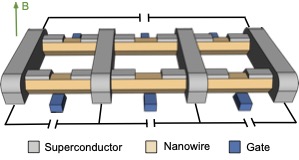Superconducting quantum circuits have emerged as a leading platform for a prospective quantum computer. Currently, a particular architecture, known as the transmon qubit, stands out as one of the most widely used encodings of quantum information in these circuits. Its popularity arises from the simplicity of its circuit design and its insensitivity to charge noise, a common source of error in superconducting devices. To learn more about the success story of the transmon, you can refer to: Review 1, Review 2.
Despite its many favorable attributes, it is important to acknowledge though that the transmon superconducting qubit is not perfect. For example, it lacks a built-in protection mechanism against relaxation errors caused by dielectric loss or non-equilibrium quasiparticles. These factors limit the depth of quantum circuits and algorithms that are executable on superconducting quantum computers. Thus, an important question in our community is: How we can improve the protection superconducting qubits against environmental noise?
Our research group is deeply interested in this research direction. Specifically, we focus on the overarching question of how new quantum materials can be used for developing novel error-protected superconducting qubit devices? So far, we have addressed this question (as part of a team with researchers from the Niels Bohr Institute and CU Boulder) by developing a 0-Pi superconducting qubit based on interferometers of hybrid superconductor-semiconductor Josephson junctions. These unique Josephson junctions provide the source for a supercurrent that is both highly transmissive and voltage-tunable. In our qubit design, we have harnessed both of these distinctive features to engineer an unusual charge 4e-supercurrent, carried by the simultaneous transport of pairs of Cooper pairs. Crucially, the Josephson potential describing this charge-4e supercurrent exhibits two distinct valleys, providing a qubit encoding that intrinsically protects against bit-flip errors. As a bonus, we have also shown that concatenating multiple interferometers can render our 0-Pi qubit insensitive to flux noise.
Recently, in collaboration with researchers at the University of Basel and IST Austria, we have identified experimental evidence for our predicted charge-4e supercurrent — a crucial step towards a protected superconducting qubit. We will continue to explore this direction theoretically and with our experimental collaborators. Moreover, we also aim to investigate other novel superconducting qubit encodings, such as fluxonium qubits and Andreev spin qubits.

